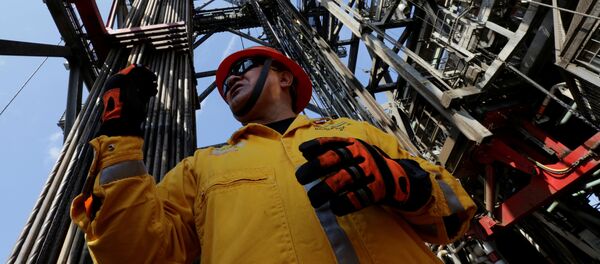Kristian Rouz – Three years after the shale revolution in North America reshaped the landscape of the global oil industry, the US is coming to Asian energy markets, further rebalancing the international structure of crude supply and demand.
The Trump administration’s move to lift the embargo on US oil exports has challenged the traditional oil players, yet, the US energy infrastructure finds itself under mounting pressure, as it has for decades been oriented on exclusively serving the domestic US market.
"When we passed the bill to allow crude oil exports for the first time since the mid-70s we intentionally did it with as few strings attached as possible," Rep. Joe Barton, R-TX, the vice chairman of the House Energy and Commerce Committee said. "We said let's let markets operate, and they've done so spectacularly."
Oil tankers full of crude are now leaving the oil ports of Texas and Louisiana in massive numbers, bound for Europe, Latin America, and Asia, but the lack of pipelines in the US heartland might challenge the US’ exporting capacity.
"See it as a bigger buffet table for Asian refiners who have more supply options and sellers to engage with," John Driscoll of Singapore-based JTD Energy Services said.
Besides, higher volumes of oil exports mean potentially higher prices for US consumers, from major refiners and petrochemicals, to airlines to your regular traffic commuters.
Dock space in commercial US ports, ship traffic, and tanker capacity itself are also becoming increasingly insufficient, as highly-flammable and volatile US shale oil meets robust demand overseas compared to the traditional crude blends, such as the London-traded Brent, and New York’s West Texas Intermediate.
US oil shipments recently surpassed an all-time high of 2 million barrels per day. Both shippers and traders say, however, the current volumes of crude exports are unsustainable due to a combination of all the aforementioned factors.
It is unknown how much oil the US could export on a daily basis as most port operators do not disclose their capacity. Nonetheless, waterways in Louisiana are already becoming increasingly busy, as are the traditional navigation routes in the Gulf of Mexico between Louisiana and Florida. This means US port infrastructure is likely to see a massive influx of investment in the coming years.
"The emergence of the US as a significant exporter to Europe or Asia will only be progressive and contingent on the development of Gulf Coast export capacity and crude price differentials remaining favorable," Harry Tchilinguirian of BNP Paribas said. "For now, these exports remain opportunistic."
RBC Capital says the US will reach the oil exports capacity ceiling once total oil exports hit the mark of 3.2 million barrels per day. Oil tankers will simply not have enough room to go in and out of the existing ports.
The US currently produces roughly 9.5 million barrels per day, which is poised to increase by 800,000 to 10 million barrels per day in the near-term. This month only, oil exports averaged 1.7 million barrels per day, exceeding last year’s figure almost threefold.
In the first half of 2017, US oil exports increased by 300,000 barrels per day to a total average of 900,000 barrels per day compared to the same period last year. The US is also currently exporting oil to 27 countries compared to only 19 a year ago.
Now that the Brent oil is above $60/barrel, it is easier for US shale producers to compete in the market, however, a significant decline in prices in early 2016 brought the issue of leverage to a greater prominence at the time. Besides, high oil prices will hold as long as the OPEC oil production cuts are intact.
All this means investment in additional US oil-exporting capacity will likely be cautious, as the industry’s increased exposure to a complex set of domestic and international risks renders any potential investor vulnerable in the face of the possible challenges, which lie outside of market forces or predictable governmental regulations.



